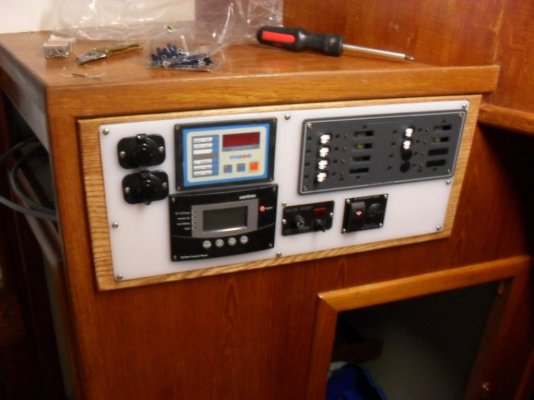Good points....I may do just that... but I will say that I'm leary of CBs...they work for a dead short...most of the time.. but their failure rate in high amperage situations that aren't dead shorts resulting in hot wires/fires is just to high for my liking. So I'm not sure what I'll do.
Plus, I'm not sure of your example where a fault between a fixture and the sub-panel wouldn't trip a breaker/fuse and who care about the ring circuit unless it dead shorts?
OK, lets take your post and take an example from it.
Assume a 12 volt DC system, 12 awg wire, 20 amp breaker feeding a load.
Create a short at the equipment. For calculations assume that the short including the resistance of the 12 awg wire is .1 ohm. Assume for calculations that the panel feeding the wire has zero resistance (we call this an infinite buss in fault current studies).
Your calculated fault current will be 120 amps.
The 20 amp breaker has approx 6 times its overcurrent rating flowing through it. I do not have the time overcurrent curves for the breaker right here but a typical operate time would be in the range of say 10 miliseconds or so.
But in this case the 20 amp breaker fails to operate. It malfunctions.
Now assume that your panel with the 20 amp breaker is a sub panel off of a main panel, fed by a 50 amp breaker.
assuming no other load on the sub panel, the current through 50 amp breaker is still 120 amps. This is 2.4X the capacity of the 50 amp breaker. a typical time overcurrent curve would cause the 50 amp breaker operate in around 3 seconds.
Now take the ring system 2/0 cable, 200 amp breaker feeding the ring. its easy to see that the 200 amp breaker would never operate. I promise you thast 120 amps flowing through a 12 awg wire will quickly get hot enough to start a fire.
This concept of overlapping overcurrent protection is a industry standard in electrical equipment design for good reason.
The only way a ring system makes any electrical sense is if every tap off of the ring is to a sub panel, with the very first thing being an intermediate overcurrent protection device. Anything other than that is risking an uncontrolled overcurrent and all the hazards that come with it.
If you think about it, you have the same hazards by having a gigantic main panel on a boat, and having every load tied directly to it. A better design would be to logically divide the load on the main panel into mini sub panels for example.




 The audit had 19 recomendations which quoted the ABYC guideline not met. It took about 20 hours and 3 grand in 60 days to meet the guidlines, if I wanted insurance. So it can be a big deal.
The audit had 19 recomendations which quoted the ABYC guideline not met. It took about 20 hours and 3 grand in 60 days to meet the guidlines, if I wanted insurance. So it can be a big deal. 
